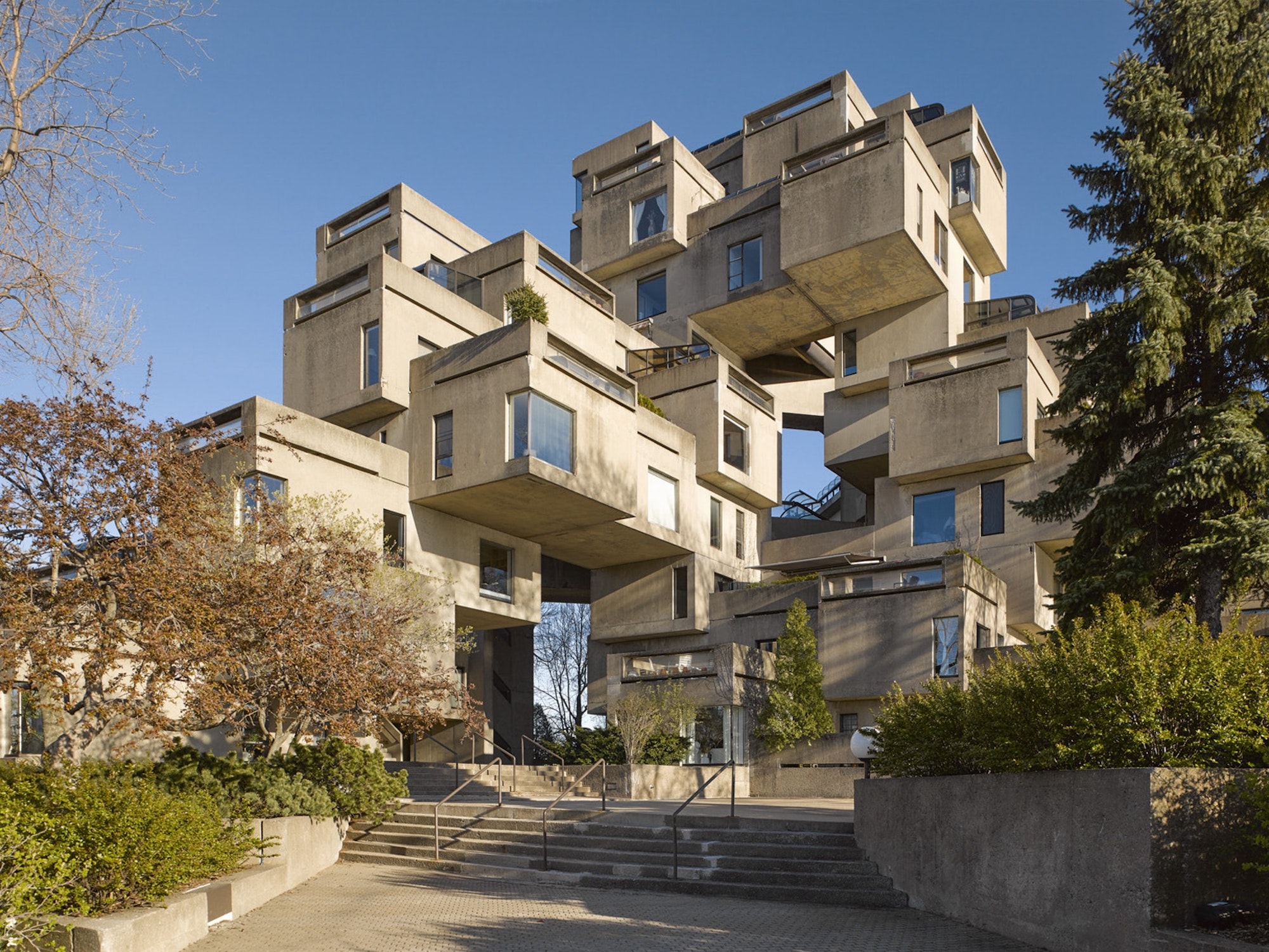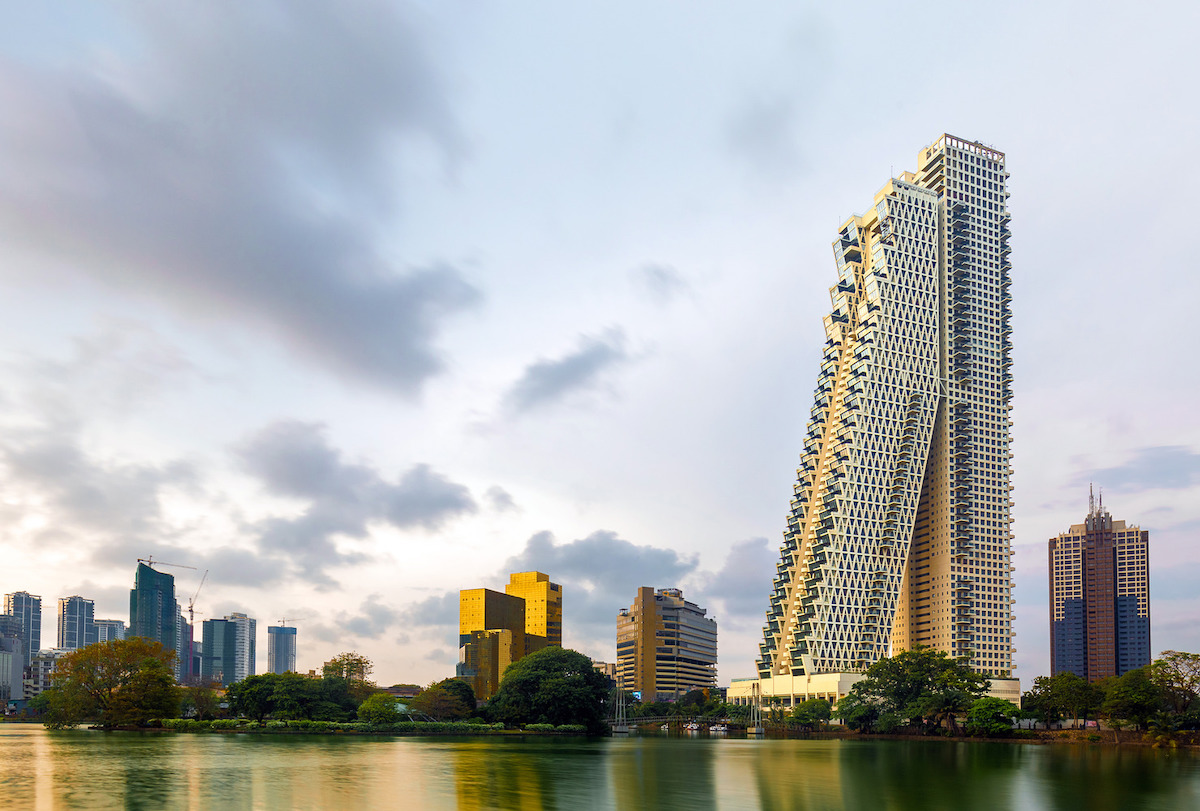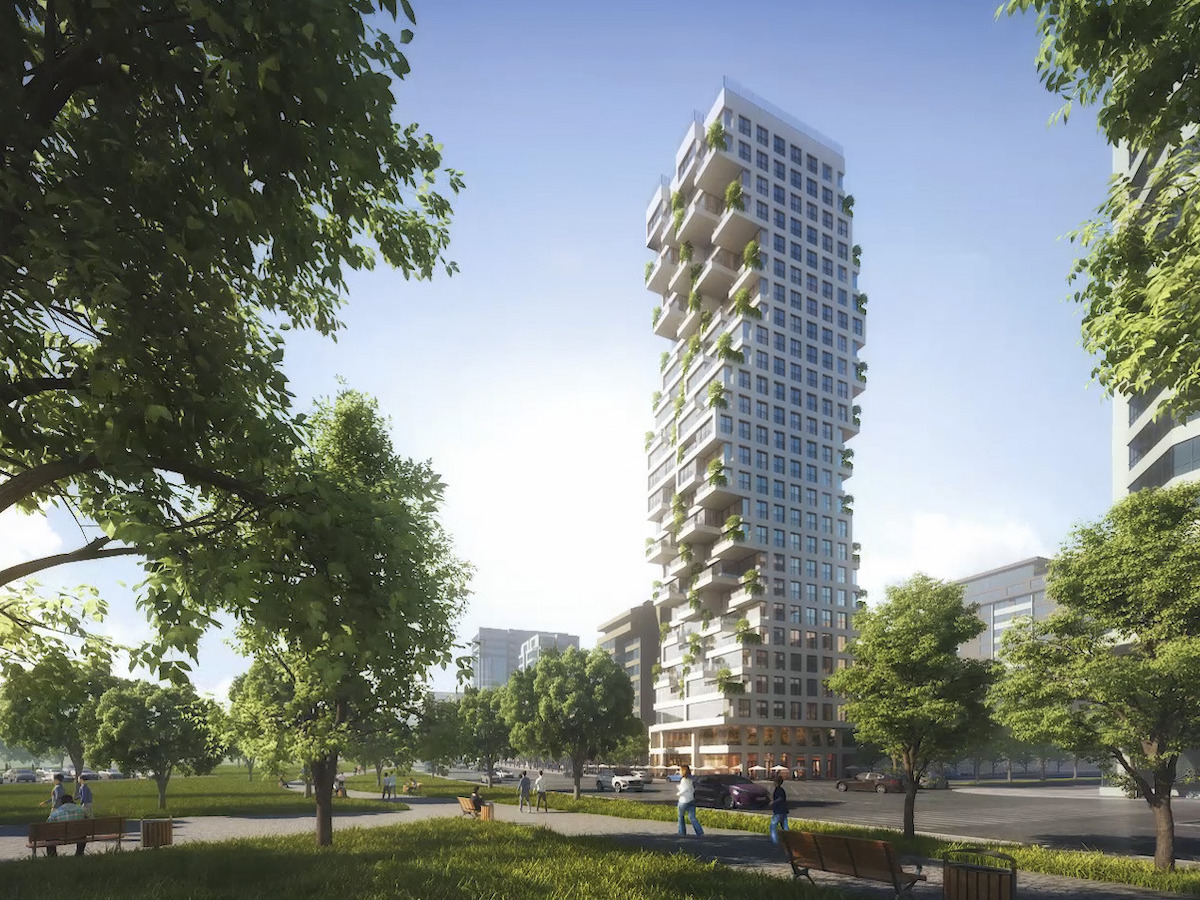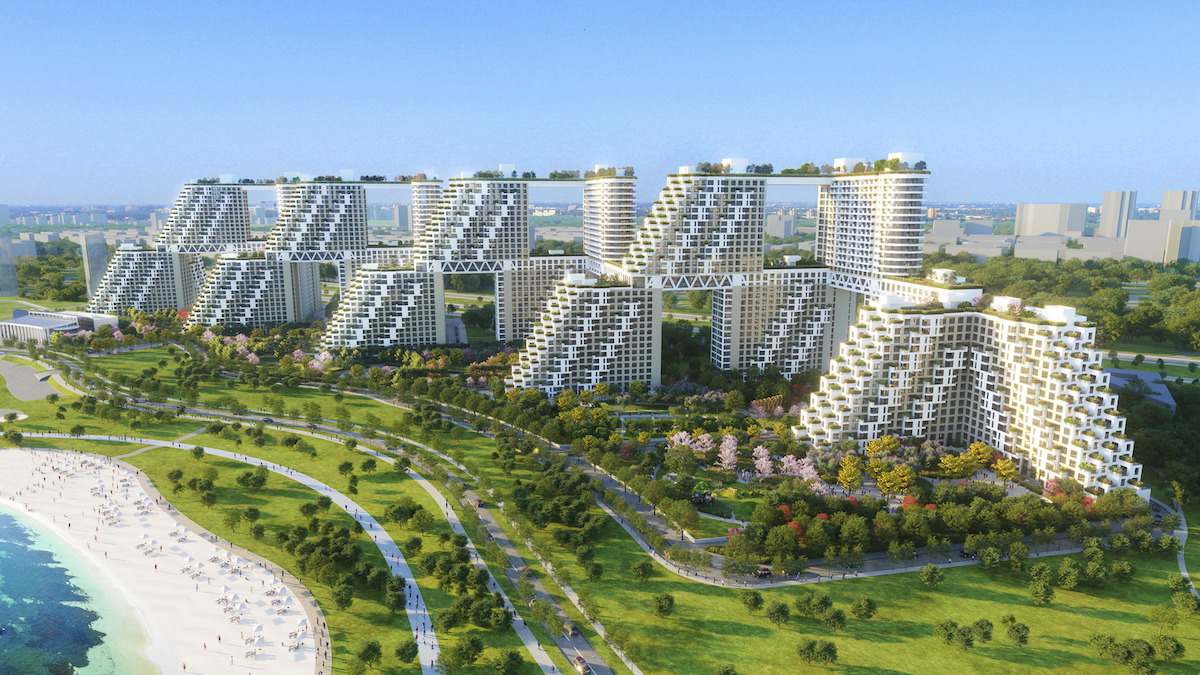It should come as no surprise that Moshe Safdie is still riffing on ideas he explored with Habitat 67, a model community and housing complex in Montreal that immediately drew attention with its dramatic stepped profile and private landscape terraces. Conceived during his master’s thesis and realized as a pavilion for Expo 67, Habitat quickly became one of Canada’s most recognizable buildings and is considered to be Safdie’s architectural opus.
Its idiosyncratic housing model—354 prefabricated concrete boxes equipped with their own private outdoor spaces and arranged in a pixelated mass—presented an influential vision for nature-infused urban living and a major step forward in the possibilities of prefabrication that still resonates today. Safdie can attest—many original residents still live there, and he recently oversaw a painstaking restoration of some units to update their energy standards.
Five decades later, and Safdie’s firm is making major headway on a multitude of new residential buildings that riff on Habitat’s most groundbreaking ideas. “Moshe has held steadfast with his thesis for over 50 years that designing to improve our quality of life must be a priority for the profession,” says design partner Jaron Lubin. “We’re now seeing many of the ideas, once held as mere utopian dreams, becoming a reality. Habitat 67’s legacy has so much more potential yet to explore.”
According to Safdie, those ideals have become newly relevant as pandemic-induced isolation has all but redefined how we interact with spaces both interior and exterior. “Over the past year, there has been a rediscovery of the interdependence between nature and society,” Safdie says. “We’ve seen an outcry for our basic human needs to be met—access to daylight, outdoor space, connection to nature, and the ritual of public life at all scales.” The projects below, slated for completion in the near future, check all the boxes.




